June 17, 2024
- Sarah
- Jun 19, 2024
- 2 min read
Updated: Jun 20, 2024
So much has changed in the prairie during my week away. The white blooms of foxglove beardtongue (Penstemon digitalis) are now abundant across the prairie. Pale purple coneflower (Echinacea pallida) and compass plant (Silphium laciniatum) blooms are beginning to appear, and the fragrant spherical bursts of common milkweed (Asclepias syriaca) have taken on a dull pink color. The common eastern bumblebee (Bombus impatiens) and two spotted bumblebee (Bombus bimaculatus) rapidly circle the stems in search of fresh nectar. The air is thick with heat and moisture, and the mosquitos keep us moving more quickly through the marshier prairies.
We took a sunset walk through Snapper Prairie, a remnant lowland prairie, and soaked in the diverse shapes and colors of the rapidly growing plant community.
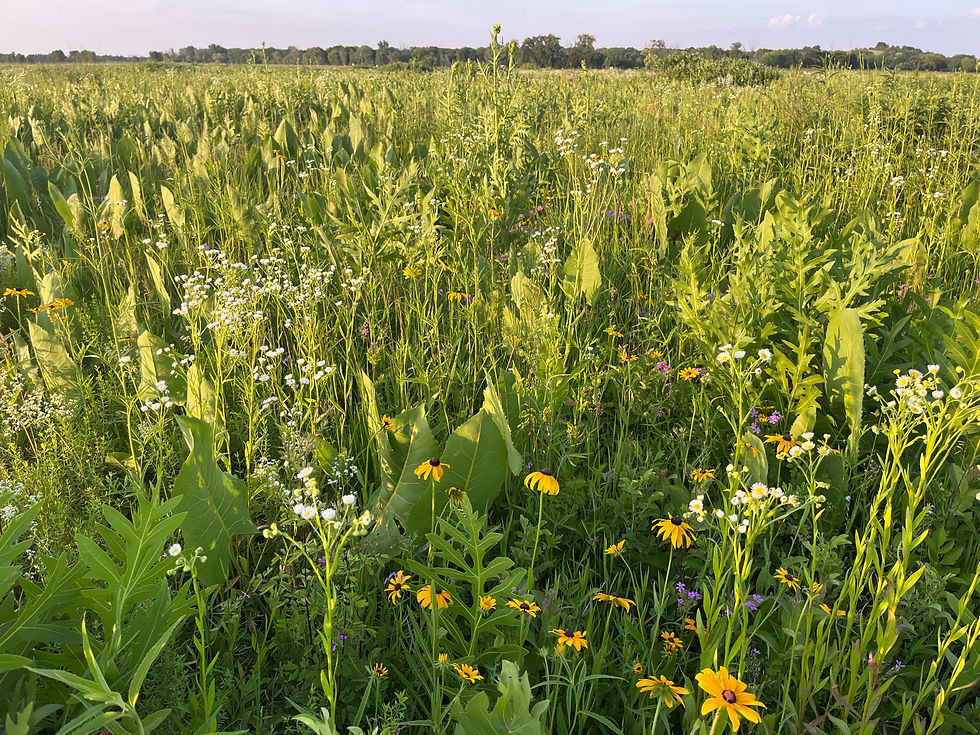
Hedgenettle (Stachys palustris) is an introduced herb that lives in prairie marshes. It is also known as marsh woundwort. Wort is a middle English word for an herbaceous plant. Aptly named, this herbaceous plant is found in marshes and can be used to treat wounds.

Dogbane (Apocynum cannabinum) is poisonous to humans, horses, dogs, and cats. However, this plant also supports moth species and is a host plant for the dogbane tiger moth (Cycnia tenera) and the snowberry clearwing (Hemaris diffinis). I was bewildered when I first came across a snowberry clearwing moth, which resembles both a hummingbird and a fuzzy lobster.
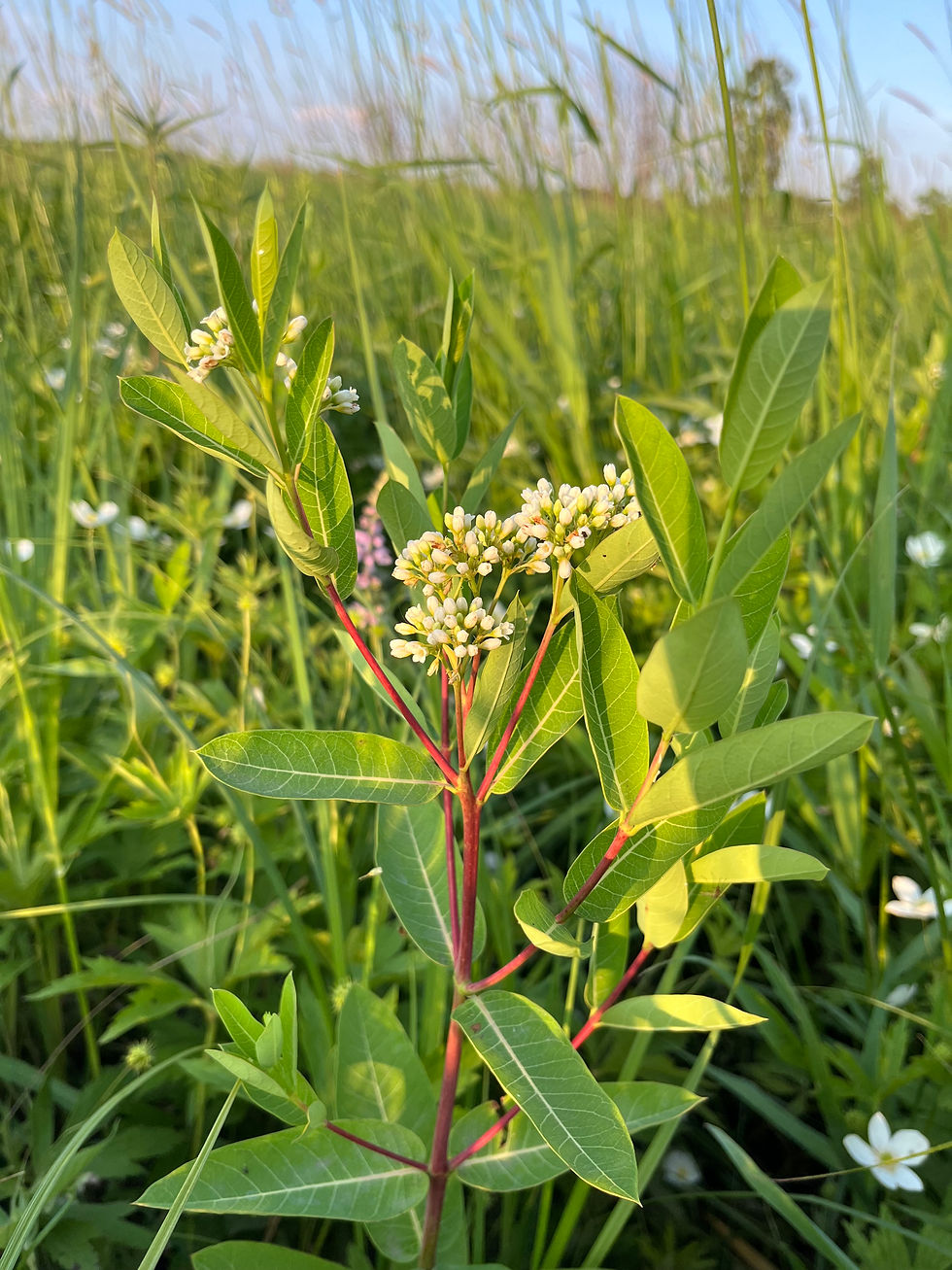
Canada anemone (Anemone canadensis) raises its petals up to capture the pooling sunshine.
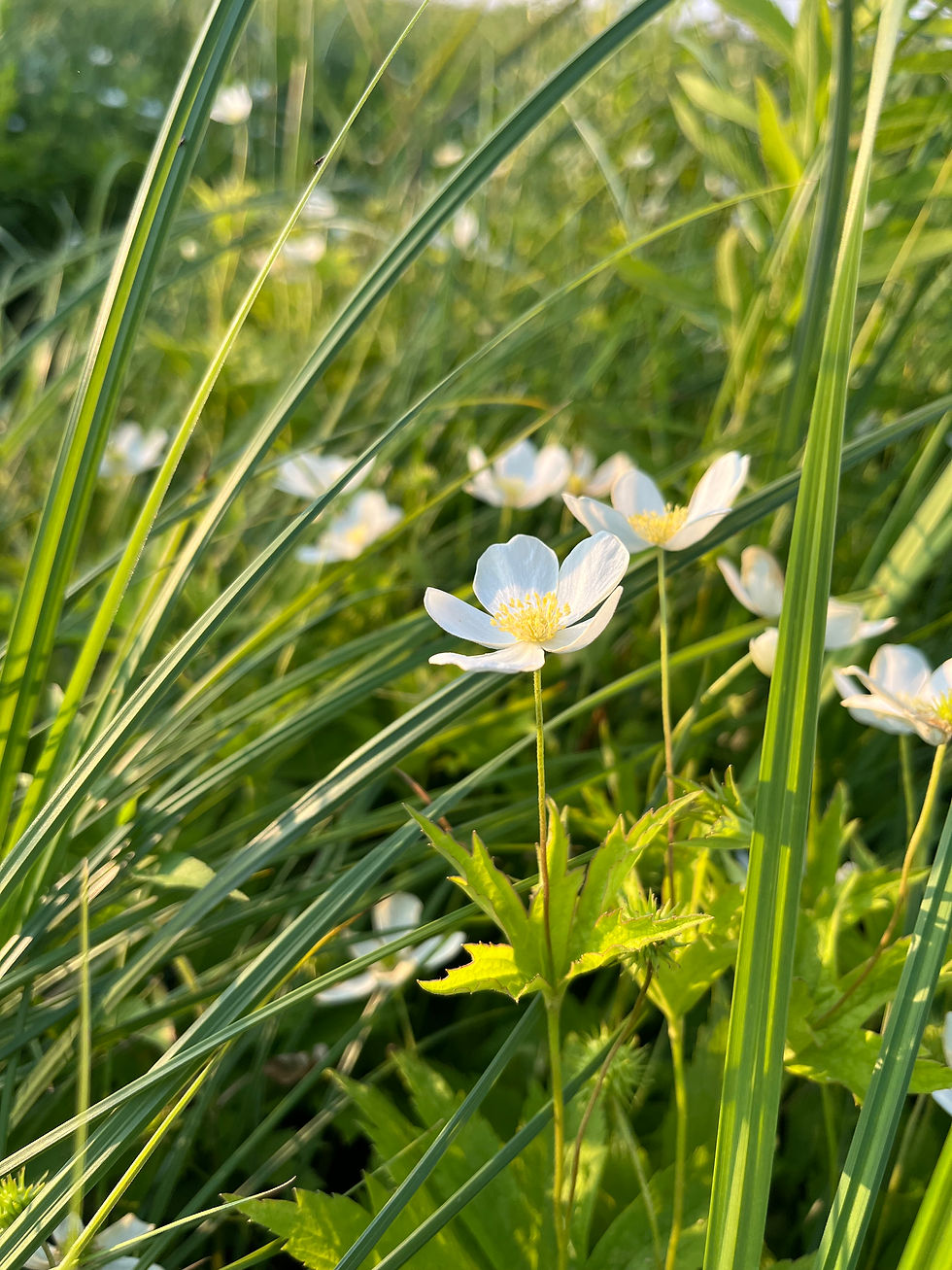
Despite its commonness and long bloom time, I still stop to admire black-eyed Susan's (Rudbeckia hirta) golden petals surrounding the rich, brown disc florets at its center.
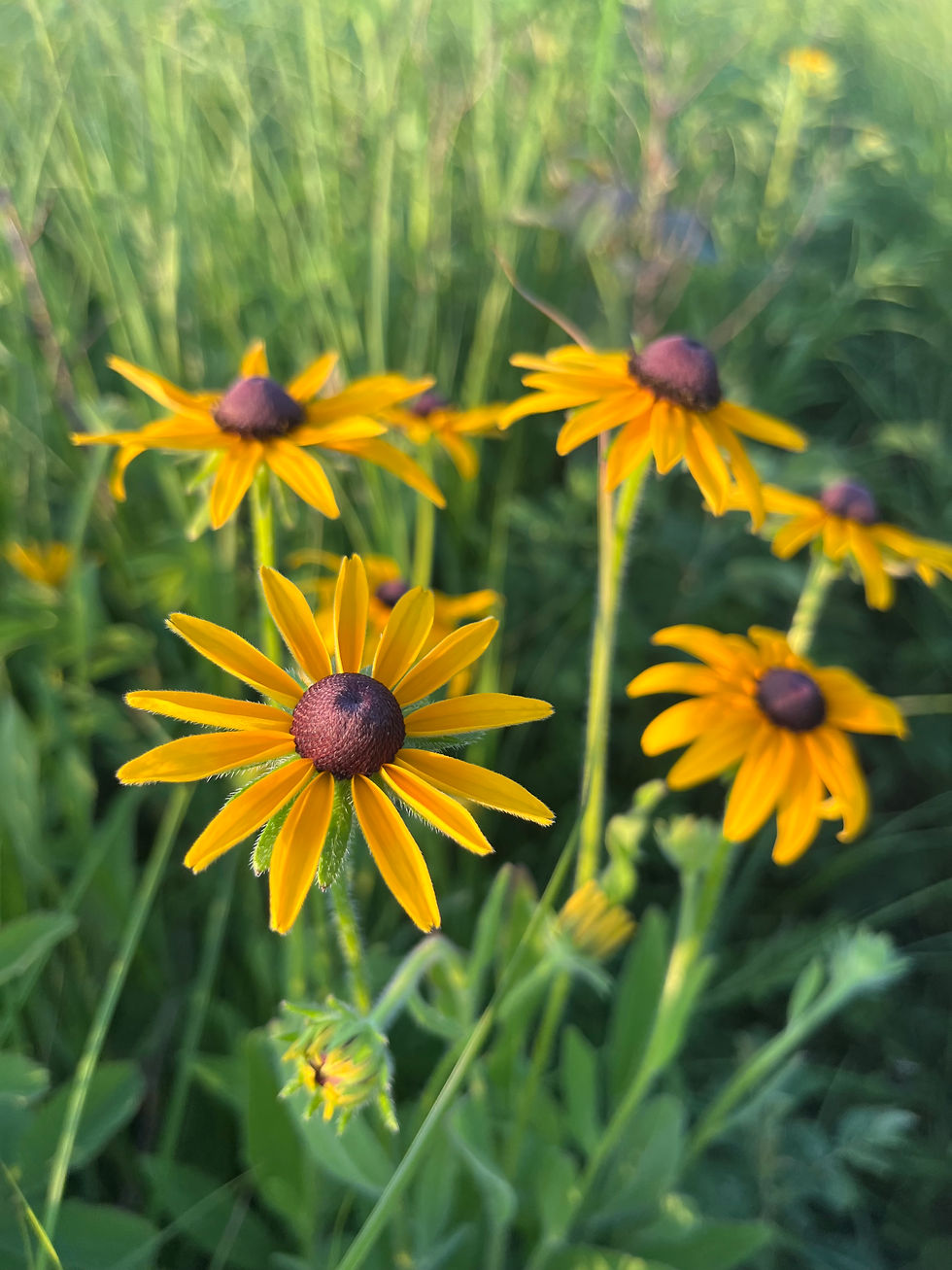

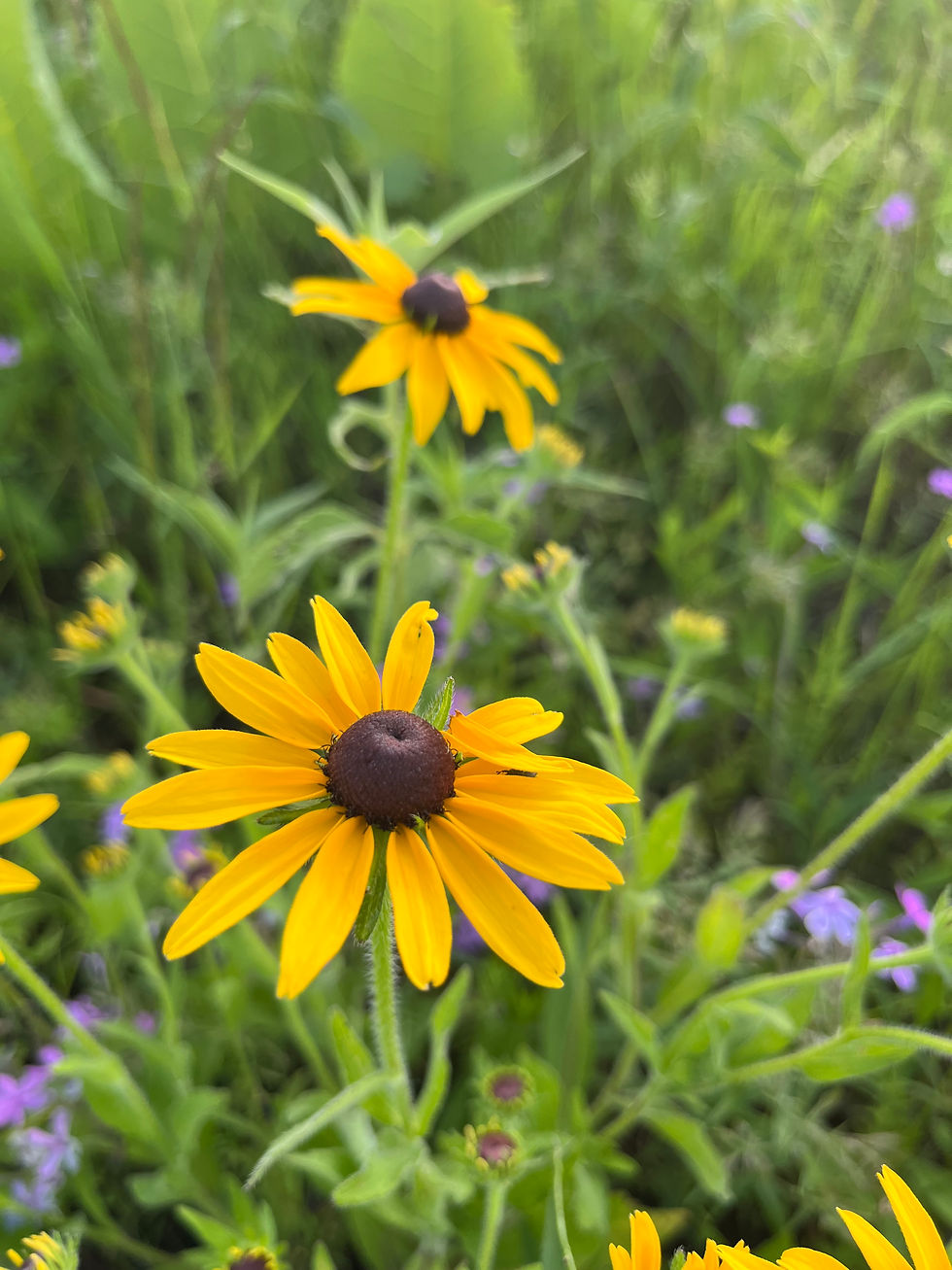
Daisy fleabane (Erigeron strigosus) is another common yet welcome sight in the prairie.

I was introduced to pale spiked lobelia (Lobelia spicata), a member of the bellflower family with dainty blooms in varying shades of light lavender.

A common eastern bumblebee (Bombus impatiens) takes advantage of the many foxglove beardtongue (Penstemon digitalis) flowers. Smaller species of bumblebees disappear into the petals with only their tails and legs visible. I saw one large bumblebee land on a foxglove flower and fall to the ground as its weight knocked the petals loose. It circled my head as I laughed, presumably trying to regain a sense of direction.

The seeds of golden alexanders (Zizia aurea), an early bloomer, are still developing beneath this foxglove beardtongue.

The grand flowers of culver's root (Veronicastrum virginicum) are beginning to appear and will later take the distinctive shape of a trident, reaching heights of up to six feet.

Foxglove beardtongue is currently the most prominent bloom in Snapper Prairie.
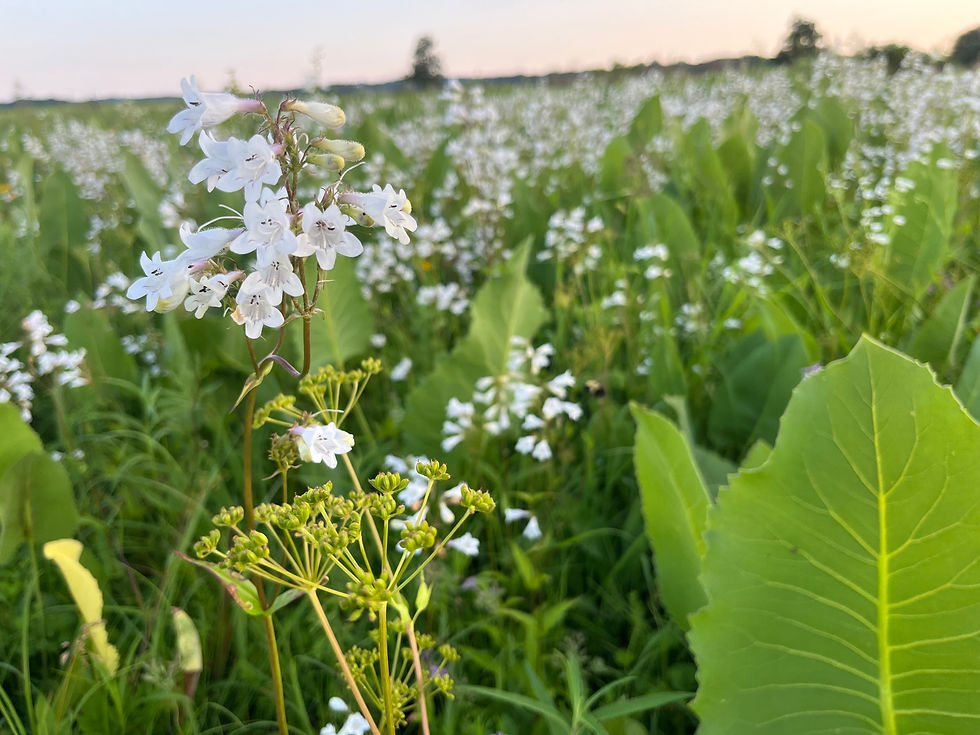
We will revisit this spot to determine whether these beautiful leaves belong to the Michigan lily (Lilium michiganense).

The setting sun higlights the intricate veins of the vast prairie dock (Silphium terebinthinaceum) leaves.
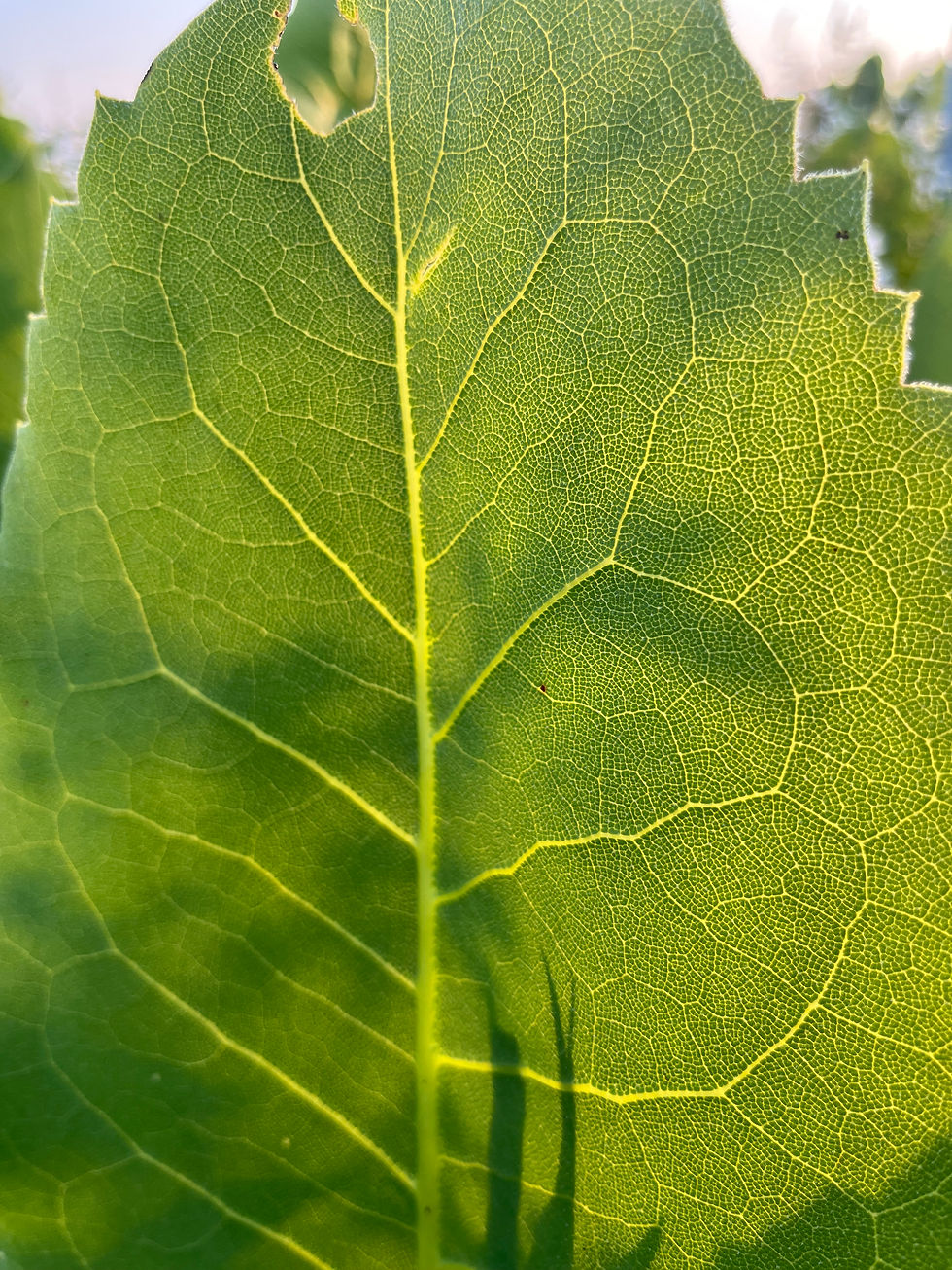
I look forward to visiting a nearby upland prairie soon, where drier soils yield a very different array of plants.

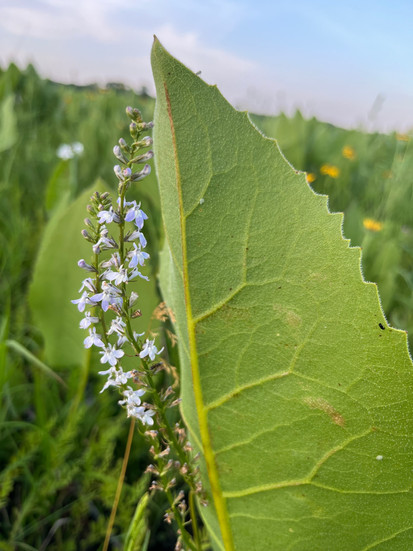

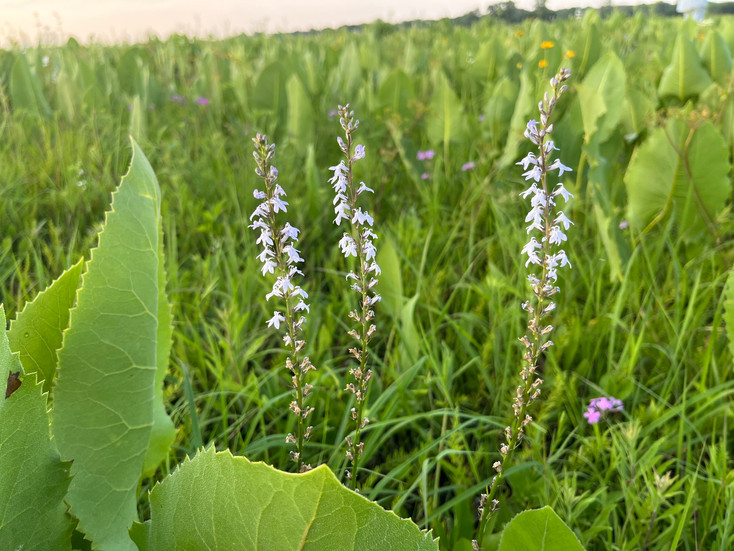


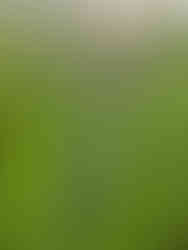




I love being able to walk the prairie with you Sarah. It’s so beautifully described and photographed.